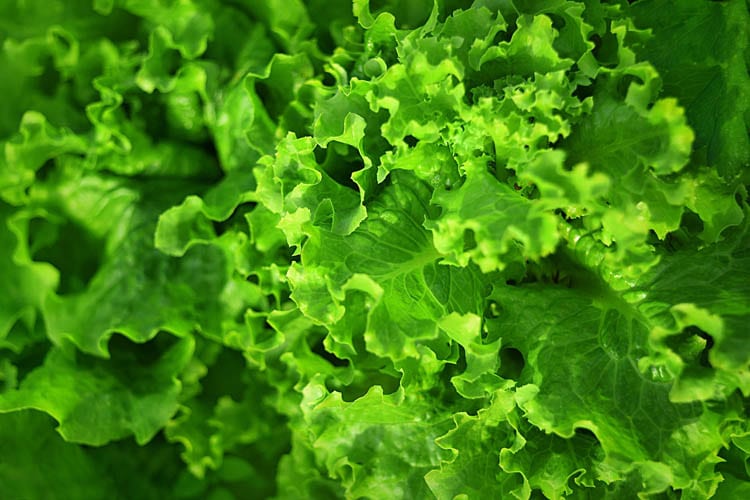The Arizona Leafy Greens industry has gone to unprecedented lengths to protect the integrity of its produce as it heads into the 2018-2019 season. During the seven months it has taken the U.S. Food & Drug Administration (FDA) and Center for Disease Control to analyze and complete its final investigative report on last spring’s E.coli outbreak, Yuma’s agriculture community has worked collaboratively and tirelessly to ensure the safety of its produce.
“Even before the FDA showed up on the ground here in Yuma following the outbreak, we were already working with some of the best and brightest minds in food safety, trying to figure out what happened and what we could do to prevent it from happening again,” said Yuma grower John Boelts, first vice president of the Arizona Farm Bureau and co-owner of Desert Premium Farms in Yuma. “While it would have been nice to have the final report earlier, there is nothing in the findings that we haven’t already anticipated and addressed in preparation for the upcoming season.”
While awaiting the expected FDA report, which was released Thursday, the Arizona Leafy Greens industry coalesced to find solutions. The Arizona Leafy Greens Products Shipper Marketing Agreement (Arizona LGMA) worked collaboratively with the University of Arizona College of Agriculture and Life Sciences to consider environmental factors that may have contributed to the outbreak. The Yuma Safe Produce Council (YSPC) was actively involved in the discussions, and in proposing solutions. In June 2018, the Yuma area agriculture industry also formed the Desert Food Safety Coalition (DFSC) specifically to help strengthen food safety efforts through outreach and education. DFSC held weekly events throughout the summer to ensure the local industry was informed about the science-based research and trained in food safety best practices.
Arizona LGMA and Yuma’s leafy greens industry were actively involved in the work of the Leafy Greens Food Safety Task Force, which included growers from Arizona and California, federal and state governmental agencies, scientists, researchers, consumer advocates and the buyer community. Members of the Task Force collectively invested thousands of hours exploring every possible scenario that may have led to the outbreak, as well as how to address potential issues this upcoming growing season and beyond.
“Our customer’s health is always our first priority, and this process has helped strengthen the collaborative efforts needed to ensure our industry is always on the cutting edge of food safety,” said Boelts. “We’ll continue working closely with the Task Force and local and federal authorities as new science reveals improved practices for protecting produce.”
During the current planting season, the produce industry is complying with updates to the Arizona LGMA Food Safety Practices (Metrics). Compliance is mandatory and will be verified by announced and unannounced audits beginning in mid-November 2018 and taking place throughout the growing and harvesting season. The updates align with the recommendations of the Task Force and include:
Environmental Assessment
Metrics now require an additional environmental assessment following weather events like flooding, frost or high winds. Evidence reviewed by the Task Force suggest a combination of unusual weather events and plant diseases may have been a contributing factor to pathogens, like E.coli, entering the leaves. New guidance documents were released this week to address these types of conditions.
Equipment Cleaning/Sanitizing
Added prescriptive measures for the frequency and timing of cleaning and sanitizing of harvest equipment has been included in these updates and allows for further verification of these practices.
Risk Management related to Concentrated Animal Feeding Operations (CAFOs)
CAFO’s are animal feeding operations in concentrated areas – common among livestock and other animal feeding operations on farms and ranches Updated metrics triple mandatory buffer zones between CAFOs and leafy greens crops to a minimum of 1,200 feet. More rigorous risk assessments will be in place whenever leafy greens are grown in the general area of a CAFO, including changes for surface water use. These updates to minimum distances and adoption of more rigorous risk assessments reflect an abundance of caution while relying upon the best available scientific studies to date. Through collaborative efforts between leafy greens industry stakeholders, new guidance documents provide further considerations for production near CAFOs. Additional guidance is expected from ongoing work.
Traceability
Metrics language will require the identification of all lot data from product that is placed into commerce. In practice, most firms do collect this data, but this change would remove any potential for not collecting data that would assist in traceback investigations or recalls.
Additionally, Arizona LGMA Food Safety Practices have always included mandatory standards around water use, soil amendments, environmental assessments, worker practices and field operations.
“The intention of Arizona LGMA members is to grow crops that are safe and part of a healthy daily diet,” said Arizona LGMA Food Safety Committee Administrator Teressa Lopez. “They are moving forward with an abundance of caution and doing everything humanly possible to prevent future outbreaks.”
Between the months of November and March, Arizona produces 130 million servings of leafy greens every day for U.S. consumers. The leafy greens community shares a common goal to continuously strengthen the way food is grown, harvested and distributed. The Arizona and California LGMA have put in place strict food safety practices to ensure the integrity of leafy greens grown, harvested, and shipped from Arizona and California. The Arizona LGMA aims to remedy potential issues through an intricate system of checks and balances and is administered by the Arizona Department of Agriculture. USDA-licensed officials audit the program. More information is available at arizonaleafygreens.org.




